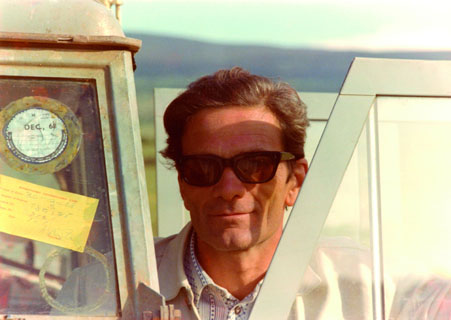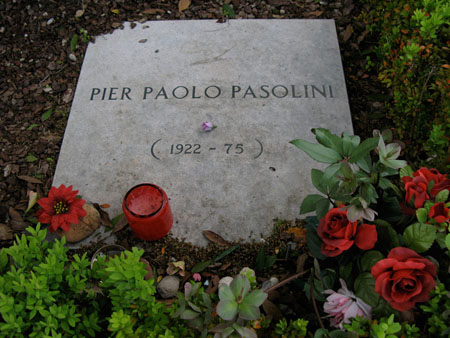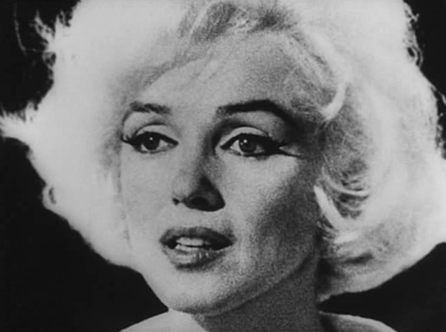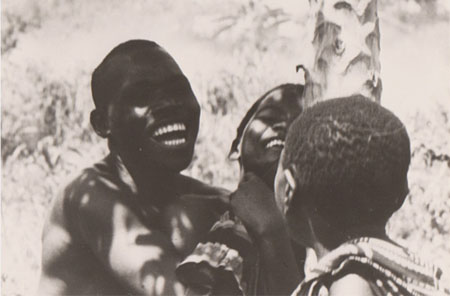
Figures of Dissent : Pasolini
8 – 9 June 2011, KASKcinema, Gent. A Courtisane programme.
“It has been said that I have three heroes: Christ, Marx and Freud. This is reducing everything to formulae. In truth, my only hero is Reality. If I have chosen to be a filmmaker as well as a writer it is because, rather than expressing reality through those symbols that are words, I have preferred the cinema as a means of expression – to express reality through reality…”
— Pier Paolo Pasolini
“Maintenant, avec le recul, je me dis que la mort de Pasolini est une bonne date pour dire que, à partir de là , le cinéma a arrêté d’être explorateur, d’être lui-même, c’est-à -dire apprenti sorcier.”
— Serge Daney
The death of Pier Paolo Pasolini (1922-1975), as Serge Daney once suggested, marked the end of an era: a certain history of cinema seemed to tiredly come to a halt. Cinema understood as a communal place where to come together and disagree, as an open space for exploration and confrontation (mise-en-scène as well as mise-en-crise) is no more â or at least no longer with the scope of former days. However, the critical and polemical tone that once indicated the vitality of the seventh art has always continued to resonate in Pasoliniâs work. Today, in the grooves of the 21st century, his voice appears to resound with the same vigor of old, when he sent cold shivers to the world of the 1960âs and 1970âs. The recent wave of retrospectives, restorations, updates and reprises proves how strongly the countertone of Pasolini – filmmaker, poet, author and true dissenter at heart – is to be missed more than ever before in todayâs consensual times. Pasoliniâs self proclaimed role, in the words of art critic Guy Scarpetta âwas to subvert conceptions of the dominant world, to explore all that is not said by conventional representations, to uncover all that is repressed in the social and cultural consensus.â This programme celebrates his outspokenly rebellious character with the screening of two rarely shown and recently restored documentaries by Pasolini, as well as works by two contemporary artists who each in their own way reinvigorate his legacy: Alfredo Jaar and Ayreen Anastas.
ââââââââââââââââââââââââââââââââââââââââââââââââââââââ-
Wed 08.06.2011, 20:30: PROGRAMME 1

Alfredo Jaar
Le Ceneri di Pasolini (The Ashes of Pasolini)
IT/CL, 2009, video, b/w & colour, stereo, Italian with English subtitles, 38â
Copy courtesy of the artist
“The Ashes of Pasolini is a modest film about the death of an extraordinary intellectual. It is mostly based on documentary material discovered after 1975, the year of his death, and before. As you know, it is still unclear who killed him. But for me, it has always been clear why: it was because of fear. Fear of his voice, fear of his life style, fear of his ideas, fear of his opinions, fear of his intellect. Pasolini was the complete intellectual: a filmmaker, a poet, a writer, a journalist, a critic, a polemicist. He was totally involved in the cultural and political life of his time. As an artist he took risks, broke the rules, he created his own rules. Pasolini wrote one of the most beautiful poems of the 20th century titled ‘The Ashes of Gramsci’ (1957), a eulogy to another great Italian thinker, Antonio Gramsci. The title of my film is based on this poem by Pasolini but I chose it to write a eulogy to Pasolini himself. In these dark times in which Italy finds itself, Pasoliniâs voice is sorely missed.” (Alfredo Jaar)
“Why a tribute to Pasolini in 2009? … In the middle of the Berlusconi era? The answer is in Pasolini words, in his voice. Itâs such a contemporary voice that we can hardly believe that these words were pronounced almost half-century ago. We are surprised when we realize how his words are directly pertinent, not just to Berlusconiâs Italy but to our current condition. […] My short film The Ashes of Pasolini itâs a montage of excerpts of his films and interviews, as well as RAI news footage. Also, I have included images shot in Casarsa, the small village where he was buried. My main aim was to revive his voice in the XXIst century, where it belongs.” (Alfredo Jaar)

Giuseppe Bertolucci & Pier Paolo Pasolini
La Rabbia di Pasolini (The Rage of Pasolini)â¨
IT, 1963/2008, 35mm, b/w and colour, stereo, Italian with English subtitles, 83ââ¨
Print courtesy of Cineteca di Bologna
“In 1962, Pasolini was invited by an Italian newsreel producer to create a feature-length film essay from his companyâs library of footage. Inspired by diverse wealth of imagery, Pasolini set out to make a film as ‘a show of indignation against the unreality of the bourgeois world.’ Assembling images from the Soviet bloc and various anti-colonial movements as complement and contrast to the newsreel footage, Pasolini crafted a remarkable tour de force of politically trenchant commentary on the modern world, climaxing in a moving meditation on the death of Marilyn Monroe. Fearing controversy and box-office failure, the producer ordered Pasolini to cut the original version to less than an hour and then promptly added a right-wing counterpart by the filmmaker Giovanni Guareschi, packaging the two parts as one film. Disowned by Pasolini, this version was indeed a failure. Although Pasoliniâs original version remains lost, an ambitious reconstruction was recently completed by Giuseppe Bertolucci and the Cineteca di Bologna using the shot list and a dialogue transcript from the first version, as well as Pasoliniâs notes on music for the film.” (Harvard Film Archive)
“A hundred elegiac pages in prose and verses, and a texture of moving images, photographs and painting reproductions: in the laboratory of the film La Rabbia, Pier Paolo Pasolini experimented for the first time with a narrative style different from the traditional and conventional documentaries of the time. His intention was â in his own words â to create a ‘new cinema genre. An ideological and poetical essay through new sequences.’ La Rabbia had to be ‘an act of indignation against the unreality of the bourgeois world and its consequent historical irresponsibility, to testify to the presence of a world that, unlike that of the bourgeoisie, is deeply rooted in reality. And reality implies a true love for tradition that can only be achieved through revolution.’ (…) The project was born from the proposal of a small producer, Gastone Ferranti, who entrusted Pasolini with the file material of a newsreel called ‘Mondo libero’, which he had directed and produced for a number of years. During an interview with Maurizio Liverani (‘Paese sera’, April 14th, 1963), Pasolini declared: ‘I pulled vision out of that material. It was horrendous, wretched, a depressing portrait of international populism, the triumph of the most trivial reactions. However, in all this terrible squalor, every now and then, beautiful images would grab my attention: the smile of a stranger, two eyes expressing joy and sorrow, and interesting sequences rich with historical significance, visual fascination in black and white’.”(Roberto Chiesi)
ââââââââââââââââââââââââââââââââââââââââââââââââââââââ-
Thu 09.06.2011, 20:30: PROGRAMME 2

Pier Paolo Pasolini
Appunti per un’Orestiade Africana (Notes for an African Orestes)â¨
IT, 1970, 35mm, colour, stereo, Italian with English subtitles, 63ââ¨
Print courtesy of Cineteca di Bologna
“While shooting Medea, a film about the subjugation of the ancient world to an alienating modernity, Pier Paolo Pasolini developed the idea to make a companion piece about another Greek myth â the story of Orestes. This story would end more happily, with the archaic making way for a different kind of modernity, built not on exploitation but on communalism. Encouraged by emerging socialist governments in post-colonial Africa, Pasolini hoped to shoot his film there, and so he went to Uganda and Tanzania to scout for locations and actors. That footage became the basis for this film, with Pasolini explaining his ideas on the soundtrack. A perfect example of leftist intellectual auto-critique, the film climaxes with Pasolini discussing his plans with a group of African students in Rome. The discussion hovers somewhere between tragedy and farce as one by one, the students calmly and kindly offer numerous reasonable objections to Pasoliniâs idea, all of which he seems to take in stride. The Oresteia project was never made. Little-seen and little-discussed, the film is essential viewing for understanding Pasoliniâs political thinking and his attachment to myth.” (Harvard Film Archive)
“Orestes synthesizes African History over the last hundred years: the sudden and almost divine passing from a ‘savage’ state to a civil and democratic one. The series of kings, who dominated the African lands (and who in their turn were dominated by the dark Erinyes) in the atrocious and century-old stagnation of a tribal and prehistoric culture, have suddenly been swept away. And Reason, almost motu proprio, has established democratic institutions. We must add that now, in the sixties, the years of the ‘Third World’, the years of ‘negritude’, the burning problem and question is the transformation of the Erinyes into Eumenides. Aeschylus’ genius foreshadowed all of this. All advanced people today agree that archaic civilizations – superficially referred to in terms of folklore – must not be forgotten, despised, or betrayed. Rather, they ought to be absorbed within the new civilization, integrating it, making it specific, concrete, historical? The terrifying and fantastic divinities of African prehistory should undergo the same process as the Erinyes, they should become Eumenides.” (Pasolini)

Ayreen Anastas
Pasolini Pa* Palestine
US/Palestine, 2005, video, colour, stereo, Arabic with English subtitles, 51â
Copy courtesy of the artist
“Pasolini Pa* Palestine is an attempt to repeat Pasolini’s trip to Palestine in his film, Seeking Locations in Palestine for The Gospel According to Matthew (1963). It adapts his script into a route map superimposed on the current landscape, creating contradictions and breaks between the visual and the audible, the expected and the real. The video explores the question of repetition. For Heidegger Wiederholung ‘repetition, retrieval’ is one of the terms he uses for the appropriate attitude toward the past. “By the repetition of a basic problem we understand the disclosure of its original, so far hidden possibilities.” The project ventures a conversation and a dialogue with Pasolini, especially his ‘Poem for the Third World’. Discutere ‘to smash to pieces’ is the Latin source of dialogue, discussion. The piece does not criticize Pasolini, but reveals unnoticed possibilities in his thought and works back to the ‘experiences’ that inspired it.” (Ayreen Anastas)
“From: Ayreen Anastas
Sent: Dec 2, 2003 4:22 PM
To: Pier Paolo Pasolini
Subject: Sopraluoghi in Palestina per il film “Vangelo Secondo Matteo”
Dear Pier Paolo,
I am writing to ask your permission to repeat your seeking in Palestine film 40 years ago in the film: Sopraluoghi in Palestina per il film ‘Vangelo Secondo Matteo’.*
In this repetition, I would like to find in that landscape what you have not found in your film. Your refusal of the Palestinian landscape makes me sad: a refusal that is a negation and affirmation at the same time: it is a negation because you did not execute ‘The Gospel According to Matthew’ in Palestine, and an affirmation in the sense of the necessity of a repetition of this venture, trip, seeking etc… only in that gap of not finding the location in Palestine in your film 40 years ago, I can start seeking them in the new film today.
So it is not a real sadness if I say: I am sad that you did not decide for this landscape and for locations there. It is rather a symbolic sadness, that will help me find an unnamable (an unknown that actually motivates the project) in that landscape I grew up in. It is a sadness of love, a double love, for you as a director and for this landscape.
(…)
* Seeking Locations in Palestine for ‘The Gospel According to Matthew'”
In the context of the research project “Figures of Dissent (Cinema of Politics, Politics of Cinema)”
KASK / School of Arts